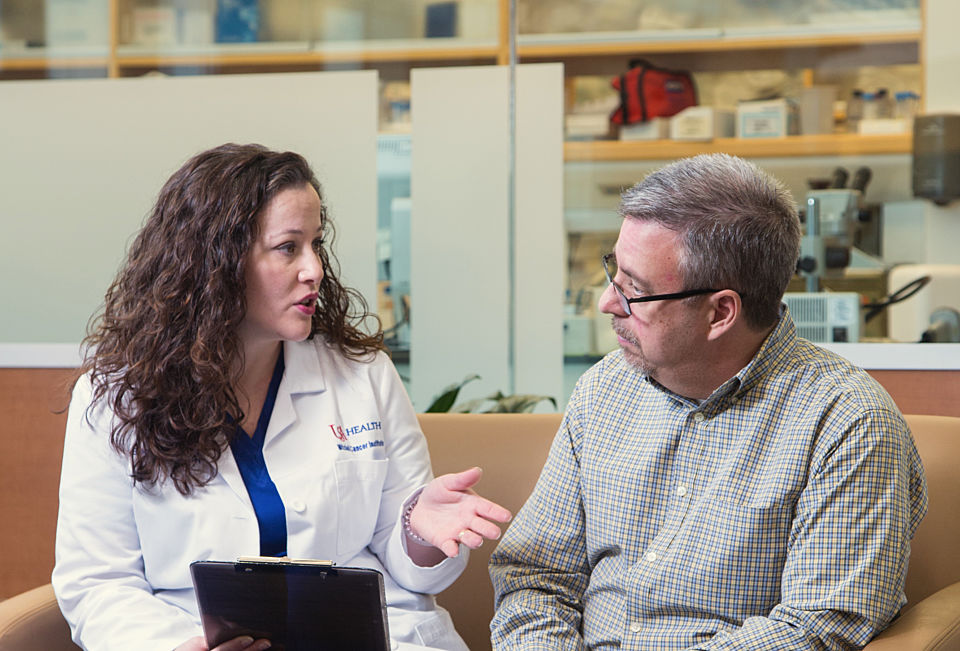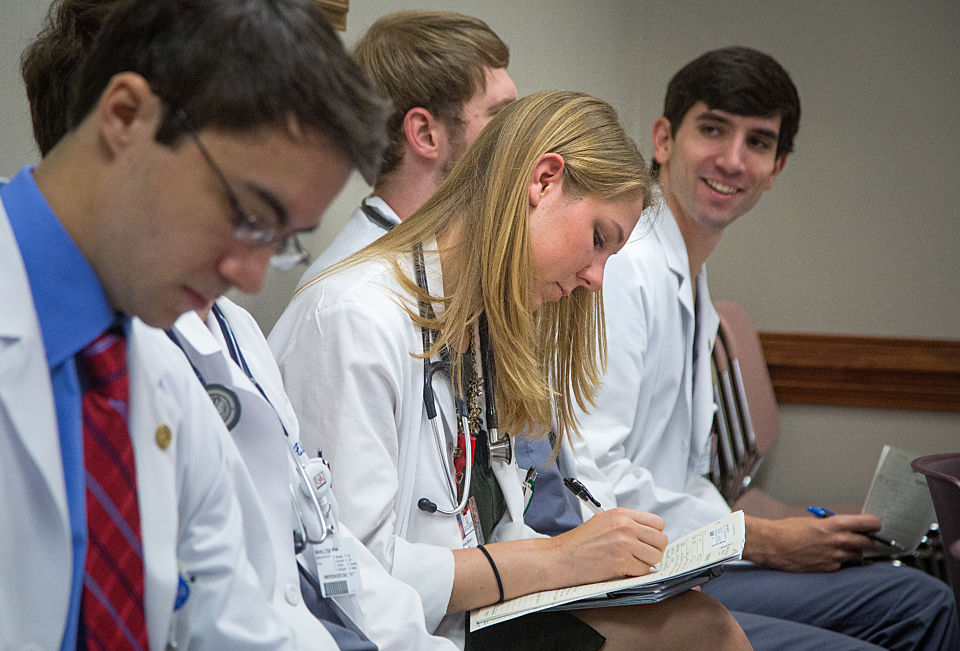Gastrointestinal Surgery at USA Health
Without the digestive system, food cannot be broken down and absorbed as energy. So when conditions arise that cannot be remedied by medication alone, the gastrointestinal surgery team at USA Health steps into action. Our team performs surgical procedures to treat and repair conditions such as:
- Hiatal hernia
- Achalasia (a rare disorder that makes it difficult for food or liquids to pass into the stomach)
- Esophageal disorders
- Gastric disorders
- Barrett’s esophagus
- Gastroesophageal reflux disease (GERD)
- Gastric motility disorders, as well as conditions involving the liver, spleen, bile ducts, pancreas, stomach and gallbladder
Med School Café Lecture: Robotic Hernia Repair
A recent Med School Café lecture featured Dr. William Richards, professor and chair of surgery, and Dr. John Hunter, assistant professor of surgery. Drs. Richards and Hunter discussed abdominal wall and inguinal hernias, as well as new robotic surgery techniques at USA that can improve the patient experience and outcomes.
Esophageal Surgery for GERD
The USA Health surgery team is well known for esophageal surgery to treat chronic gastrointestinal reflux disease (GERD). Our team has significant success in treating this disorder with the LINX® system, which uses a small, flexible band of magnets implanted laparoscopically around the esophageal sphincter above the stomach. The magnetic attraction between the beads keeps the sphincter closed to help prevent reflux, which occurs when acid and bile flow back from the stomach into the esophagus.
Barrx Endoscopic Ablation
Our specialists also perform the Barrx endoscopic ablation. In this procedure, cells in the esophagus that are damaged or at risk for developing into cancer are ablated, or removed, before they can mutate and become malignant.
Advanced Technique
More and more GI surgeries at USA Health are performed with minimally invasive laparoscopic surgery. This approach reduces surgical complications and recovery times for patients.
Seeing the Problem
There was a time when surgeons relied on X-rays to assess a patient’s gastrointestinal problems. Today, they use endoscopy, which allows them a much clearer view of what’s happening internally with a patient, especially with regards to the lining of the esophagus and the digestive tract. By utilizing this tool before a procedure begins, surgeons are better equipped to provide optimal outcomes to patients.




